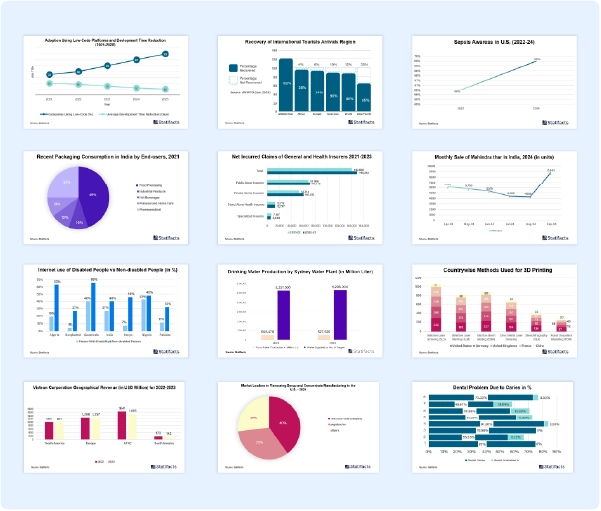The U.S. digital health market size was estimated at USD 79.12 billion in 2024 and is projected to be worth around USD 239.23 billion by 2034, growing at a CAGR of 11.7% from 2025 to 2034.
U.S. Digital Health Market Report Highlights
- By component, the services segment dominated the U.S. digital health market in 2024 with the largest revenue share.
- By component, the software segment is expected to grow the fastest during the forecast period.
- By technology, the telehealth segment led the U.S. digital health market in 2024 with the largest revenue share and is expected to grow fastest during the forecast period.
- By technology, the mHealth segment held the second-largest position in the market in 2024.
The U.S. digital health market refers to the production, distribution, and application of digital health in which the use of technology to enhance health and healthcare delivery. It includes digital fitness and well-being, online doctor consultation, and digital treatment and care markets. Digital health technologies use computing platforms, software, connectivity, and sensors for healthcare and related uses. Digital health refers to the use of information and communications technologies in medicine and other health professions to manage illness and health risks and to promote wellness.
Digital health effectively enhances patient outcomes by increasing care accessibility for the underprivileged and making it easier for medical personnel to manage their work. Digital health has brought massive innovations in personalized medicines, like genomics. Digital health can help make health systems more effective and sustainable, allowing them to deliver affordable, good quality, and equitable care. Digital technology is important in healthcare because it can streamline processes, increase efficiency, enhance productivity, and save businesses money. Many companies face dilemmas of incorporating and adopting new technology into their business when their current technology is working fine.
Growing venture capital investments driving the growth of the U.S. digital health market. Digital and AI investments provide health systems with opportunities to address the many challenges they face. Successful health systems will invest in areas with the greatest potential impact while removing barriers- for example, by upgrading legacy infrastructure. Well-planned capital investments tend to be an effective use of company funds, directing them to DCF-positive projects that ensure a positive long-term return. Well-planned capital investments add value to a company. Venture capitalists spend their time on this process of raising funds, finding startups to invest in, negotiating deal terms, and helping the startups grow. Investing in the healthcare sector offers potential for growth due to increasing demand for healthcare services and innovations in medical technology. It also provides diversification to an investment portfolio. Digital health can help make health systems more efficient and sustainable, enabling them to deliver affordable, good quality, and equitable care.
Rising demand for remote patient monitoring services driving the growth of the U.S. digital health market. Remote patient monitoring is the use of digital devices to monitor a patient’s health. Some of the advantages include ongoing monitoring of the patient’s health, data sharing between the patient and provider, and patient engagement. Common benefits of remote patient monitoring include continuous monitoring of patients to provide prompt care, enhancement of patient self-care, effective communication, visualization of health trends, increased patient confidence, and greater patient education. With remote patient monitoring (RPM), practitioners gain a more holistic understanding of a patient’s health condition, which can lead to more accurate adjustments in medications, fewer emergency room visits, more time between in-office visits, and more control over personal health. Remote monitoring systems also offer benefits, including improved chronic disease management, early diagnosis, and timely intervention during emergencies. They provide continuous data, allowing healthcare professionals to make more informed decisions. It helps in continuously tracking vital signs like oxygen saturation, respiratory rate, blood pressure, and heart rate, providing healthcare professionals with the data needed to make informed decisions.
Increasing use of tablets, smartphones, and other mobile platforms driving the growth of the U.S. digital health market. The advantages of using tablets, smartphones, and other mobile platforms in the healthcare industry include effective resource management, reduced administration burden, improved efficiency, improved accuracy, reduced healthcare expenses, direct 24/7 patient monitoring and management, fosters real-time communication, and makes healthcare more accessible. The benefits of mobile devices in healthcare also include better communication, personalized patient care, increased accuracy in documentation, real-time access to medical research and information, direct patient management, improved workflow and efficiency of physician, real-time communication with stakeholders, and efficient healthcare data collection.
According to a report published in January 2023, by Kyruus Health, the average adult in the United States spends 3 hours and 43 minutes on their medical devices. That tallies up to 50 days per year.
Medical device use is not reserved only for leisurely activities. More than 90 percent of physicians and 65 percent of nurses use a smartphone or tablet frequently in the clinical setting.

